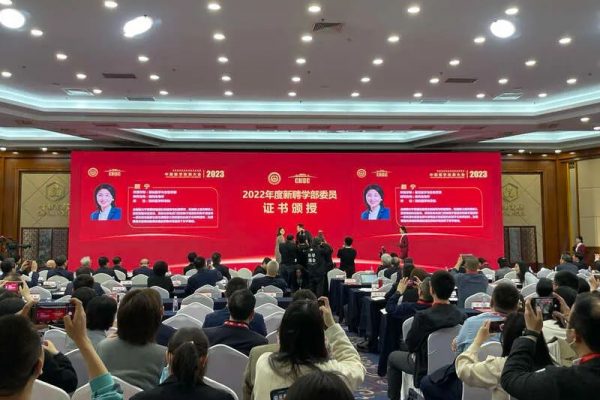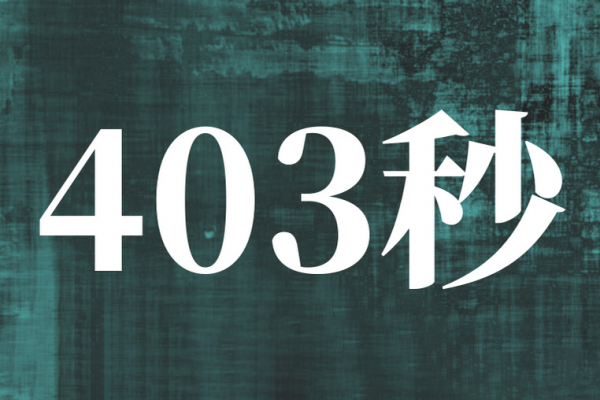Chip发表北京理工大学路翠翠团队长篇综述论文:片上拓扑纳米光子器件
FUTURE远见| 2022-12-02
Future|远见
Future|远见future选编
该综述聚焦光子芯片应用,从片上光子芯片功能集成的角度总结和阐述了当前不同类型的拓扑纳米光子器件,分析了各类器件的结构、原理和功能,并对拓扑纳米光子器件面临的挑战和机遇进行了展望。
纳米光子器件利用光子作为载体进行信息传输和处理,具有集成度高、速度快和能耗低等优点,在全光通信、全光计算和全光网络等方面具有重要的应用价值²,然而,纳米光子器件的性能通常会因为受到结构参数误差的影响而降低,器件尺寸越小,性能受到的影响越大。与传统的光子态相比,拓扑光子态由于受到拓扑保护具有鲁棒性和抗干扰性等优点,因此,拓扑光子态为实现鲁棒的片上拓扑纳米光子器件提供了优质平台³⁻⁵。片上拓扑纳米光子器件有望在集成光子芯片方面发挥重要作用。
该综述从片上光子芯片功能集成的角度出发,对不同类型的片上拓扑纳米光子器件进行了分类和总结,依次介绍了片上拓扑光源,拓扑光波导,拓扑光分束和选择器件,拓扑光信息处理,拓扑量子信息处理,以及拓扑光放大器和光传感器(图1),并分析了不同类型拓扑纳米光子器件所面临的挑战和机遇。拓扑光源部分包括拓扑激光和拓扑量子光源;拓扑光波导部分介绍了基于光量子霍尔效应、光量子自旋霍尔效应和光子谷霍尔效应等机制的拓扑波导,以及拓扑波导阵列;拓扑光分束和选择器件包括拓扑彩虹器件、拓扑路由器件、拓扑能量分束器和拓扑滤波器,其中拓扑彩虹器件作为调控多频拓扑态的重要器件(图2),可以将不同频率的拓扑态分离至不同位置,为拓扑路由、拓扑态慢光、拓扑态光存储等应用奠定了基础³⁻⁴。拓扑光信息处理部分主要涵盖拓扑光开关、拓扑光学隔离器和循环器以及拓扑光学逻辑器件;拓扑量子信息处理部分介绍了拓扑光子态在量子信息处理上的几种典型应用;拓扑光放大器和拓扑光传感器分别在光信号接收和光信号探测上具有重要应用价值。
最后,该综述展望了未来的片上拓扑光子器件的发展方向,包括非厄米拓扑光子学、非阿贝尔拓扑光子学和超构材料拓扑光子学等,如何将拓扑态领域出现的新物理应用于光子芯片将是很长时间内待解决的问题。
On-chip topological nanophotonic devices¹
In this review, different types of topological nanophotonic devices are summarized and illustrated from the perspective of photonic on-chip functional integration. The challenges and opportunities faced by different types of topological nanophotonic devices are given. Finally, the future development of topological nanophotonic devices is discussed.
A nanophotonic chip uses photon as carriers for information transmission and processing, which has the advantages of high level of integration, high speed and low energy consumption. It has important applications in all-optical communication, all-optical computing, all-optical network, etc., and is one of the promising directions for chip development in the post-Moore era². However, it is inevitable that impurities or defects are introduced into the structure during fabrication, which can lead to scattering of photons propagating in the structure, thus reducing the performance of the device. Topological photonic states have unique unidirectional transmission property and can propagate unidirectionally in topological channels. Topological photonic devices introduce topological photonic states into the design of nanophotonic chips. The propagation of photons in the structure is protected by topology, which can reduce the scattering of photons caused by the imperfect structure due to machining errors. Therefore, topological nanophotonic devices have great application prospects in the integration of next-generation photonic chips ³⁻⁵.
From the perspective of photonic on-chip integration, this review successively introduces topological light sources, topological optical waveguides, topological optical separation and selection devices, topological optical information processing, topological quantum information processing, and topological optical amplifiers and optical sensors (Fig.1). Topological light source includes topological laser and topological quantum light source. Topological waveguides and topological waveguide arrays based on optical quantum Hall effect, optical quantum spin Hall effect and photonic valley Hall effect are introduced. Topological optical separation and selection devices include topological rainbow devices, topological router devices, topological energy beam splitters and topological filters. Among them, the topological rainbow devices, as important devices for manipulating topological states with multi frequencies, can separate topological states of different frequencies to different places³⁻⁴, laying a foundation for applications such as topology routing, topology slow light, topology optical storage, etc. (Fig.2). Topological optical information processing includes topological optical switches, topological optical isolators, circulators and topological optical logic devices. Topological quantum information processing introduces several typical applications of topological photon states in quantum information processing. Topological optical amplifier and topological optical sensor have important application value in optical signal reception and optical signal detection respectively. In the process of introducing the topological devices mentioned above, the challenges and opportunities faced by different types of topological photonic devices are discussed.
Finally, this review looks into the future development of topological photonic devices on chip, including non-Hermitian topological photonics, non-Abelian topological photonics, and metamaterials topological photonics in physical systems. How to convert the novel physics into practical applications for photonic chip? There may still be a long way to go.
参考文献:
[1]Lu,C.-C.,etal.On-chiptopologicalnanophotonicdevices.Chip 1,100025. (2022).
[2]Markov, I. L. Limits on fundamental limits to computation. Nature 512, 147–154 (2014).
[3]Lu,C.C.,Wang,C.Y.,Xiao,M.,Zhang,Z.Q.&Chan,C.T.Topologicalrainbowconcentratorbasedonsyntheticdimension.Phys.Rev.Lett. 126,113902(2021).
[4]Lu, C. C. et al. On-chip nanophotonic topological rainbow. Nat. Commun. 13, 2586 (2022).
[5]Li,Y.H.,Liang,C.,Wang,C.Y.,Lu,C.C.&Liu,Y.-C.Gain-loss-induced hybrid skin-topological effect. Phys. Rev. Lett. 128, 223903 (2022).
论文链接:
https://www.sciencedirect.com/science/article/pii/S2709472322000235
主要作者简介
路翠翠,北京理工大学教授,研究方向为拓扑光子学与微纳光子学,发表SCI论文54篇,包括Physical Review Letters 6篇,Nature Communications 2 篇,Light:Science & Applications 2篇,光学综述Advances in Optics and Photonics 1篇等,著有英文书Intelligent Nanotechnology 1章。主持国家自然科学基金重大计划培育项目、面上项目等。担任Optics Letters、Frontiers in Physics等期刊编委。
袁弘毅,北京理工大学物理学院2021级硕士研究生,研究方向为微纳光子器件,包括基于优化算法的微纳光子器件逆向设计,新型拓扑微纳光子器件等。自本科至今已发表SCI论文6篇,曾获国家奖学金、中国物理学会2021年秋季学术会议WILEY联合最佳墙报奖等。
张红钰,北京理工大学物理学院2021级博士研究生,主要研究片上拓扑微纳光子器件的实现及应用,以第一作者/共同第一作身份共发表SCI论文6篇,曾获国家奖学金、省级研究生创新论坛口头报告特等奖。
刘永椿,清华大学物理系副教授,主要研究方向包括量子光学、量子精密测量、拓扑光子学,发表学术论文70余篇(包括8篇PRL),引用3000余次,H因子为32。教育部青年长江学者,曾获饶毓泰基础光学奖、王大珩光学奖等,任Frontier of Physics、《光子学报》青年编委。
关于Chip
Chip是全球唯一聚焦芯片类研究的综合性国际期刊,已入选由中国科协、教育部、科技部、中科院等单位联合实施的「中国科技期刊卓越行动计划高起点新刊项目」,为科技部鼓励发表「三类高质量论文」期刊之一。
Chip期刊由上海交通大学与Elsevier集团合作出版,并与多家国内外知名学术组织展开合作,为学术会议提供高质量交流平台。
Chip秉承创刊理念: All About Chip,聚焦芯片,兼容并包,旨在发表与芯片相关的各科研领域尖端突破性成果,助力未来芯片科技发展。迄今为止,Chip已在其编委会汇集了来自13个国家的68名世界知名专家学者,其中包括多名中外院士及IEEE、ACM、Optica等知名国际学会终身会士(Fellow)。
Chip第一卷第四期(2022年冬季刊)已于2022年12月在爱思唯尔Chip官网以金色开放获取形式(Gold Open Access)发布,欢迎访问阅读文章。
爱思唯尔Chip官网:
https://www.journals.elsevier.com/chip
Warning: Invalid argument supplied for foreach() in /www/wwwroot/www.futureyuanjian.com/wp-content/themes/future/single-news.php on line 41



